Interview with Masaru Nishitani, new director-general of the National Museum of Japanese History
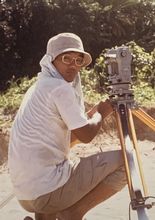
In April 2020, Professor Masaru Nishitani became the eighth director-general of the National Museum of Japanese History (Rekihaku). A history buff since his early teens, Professor Nishitani says his favorite book as a junior high-school student was Herodotus’s The Histories. Looking back at his research career, he says his intellectual curiosity was whetted by the variety of human behavior he has witnessed, and it has led him on a quest to define humanity. In this interview, we explore three key questions with Professor Nishitani. After specializing in archaeology, how did he come to develop a research style incorporating anthropological methodologies? What are his ideas for museum exhibitions and his ambitions as Rekihaku director-general?
Director-general, what inspired you to study archaeology?
I first became interested in archaeology when I was a first-year student at Kumamoto University. I was invited to participate in a dig held as part of Professor Kazumi Shirakihara’s lab. Professor Shirakihara is a specialist on the Ryukyu Islands the southernmost part of the Japanese archipelago, and the excavation took place on Nakanoshima: the largest of the Tokara Islands. I found pleasure in the excavation works because they were conducted as a student-instructor collaboration and took place outdoors. The excavation was a team effort that involved tasks such as negotiating for access to the excavation site, arranging for lodging, directing the dig itself, sorting and photographing artifacts, and compiling the project report. When you were a graduate student, you got to take the lead in those jobs. I was sometimes teamed up with classmates with whom I didn’t get along and we’d have our disagreements, but still, I liked the archaeology research approach where people interact and coordinate in handling the activities necessary for the excavation. Going out into the field for research, rather than just holing up in a room alone leafing through documents, was also something that appealed to me.

Photo of Professor Nishitani at the excavation site in the Ryukyu Islands. Professor Nishitani was a Kumamoto University graduate student when this picture was taken.
We heard that you later developed a research approach incorporating anthropological methodologies. What led you to your current research theme, East Asian human history?
One factor was my three years studying in China, starting in 1986. Having had no prior experience living outside Japan, those years exposed me to China’s vastness and how the people there had dramatically different cultures and lifestyles from one region to another. For example, back then every Tianjin and Beijing resident wore a Mao suit, so all outfits you could see were blue and green. Winter meals in those cities were always the fatty portions of pork and Chinese cabbage or potato stir fries. There were very few restaurants, so dining out was not an option. In Guangdong, by contrast, there were many privately-run shops, and the meals there were delicious. Experiencing these differences firsthand deepened my interest in Chinese culture and people.
The other factor was that I joined the research project on China’s Hainan Island led by Dr. Toru Shinohara. a former Rekihaku professor who specialized in folklore studies and ecological anthropology. Dr. Shinohara was engaged in the Japan Society for the Promotion of Science’s Research for the Future Program at the time and was arranging for participant observation in a certain village of the island’s indigenous Li people. By that time my Chinese was fairly good, so Dr. Shinohara asked me to assist him in negotiating with the residents, and I accordingly joined his team’s stay in the village. That experience allowed me to observe how the people of the village lived, how they used hunting and gathering tools, as well as the methodologies practiced in anthropological research. I felt that learning about the life of a people firsthand is extremely beneficial in imagining and retracing the original use of artifacts found through excavation. As I had developed a special interest in Chinese culture and people, my research focus gradually shifted to East Asian human history.
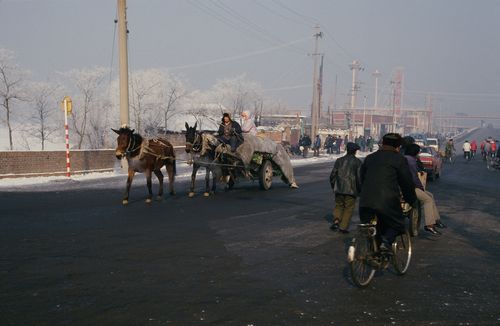
A scene of winter in Tianjin, where Professor Nishitani studied, 1986.
Please tell us about the research themes you are exploring these days.
Through “markets,” I am exploring regional history and culture. The following is about another project with Dr. Shinohara. In the south of Yunnan, on the border between Vietnam and China, there is a deep valley called Zhemigu. At towns and villages along the valley’s river, nine tribes gather and hold markets every five days while adjusting their schedules in such a way that the markets do not overlap. Various tribes mingle in the periodic markets, and through buying and selling, they keep the economy going. I was quite impressed by those markets and, for about five years, I made regular trips there, hoping to decipher the mechanism of the markets and the behavior of the people involved. Studying fairs and periodic markets has since become my life’s work. My current focus is markets in Chiba and Niigata prefectures in Japan as well as those in Taiwan. Despite their popularity in continental East Asia, the number of periodic markets in Japan has been dwindling in recent years. This contrasts with an ongoing increase in South Korea and Taiwan; I wish to shed light on the background of that gap.
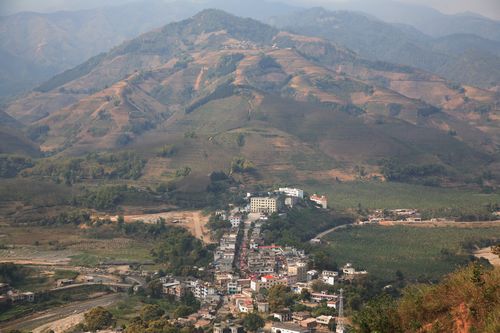
Zhemigu valley, south of Yunnan and bordering Vietnam and China. Professors Nishitani and Shinohara researched both the mechanism of periodic markets held here every five days, and the behavior of the people involved.
Unlike the majority of museums in Japan, Rekihaku is a research institute consisting of scholars who specialize in fields such as history and folklore. Factoring in this characteristic, how do you see Rekihaku exhibitions?
The goal of Rekihaku exhibitions is to explore what it means to be human and to represent humankind. We successfully achieved this goal in our special exhibition Great Fake Exposition: Cultural History of Forgery and Imitation, for which we brought together and showcased counterfeit items. Our intent behind this exhibition was to contemplate why people craft fakes. While some are meant to deceive people, many are made to fulfill other purposes. For instance, all the roughly 280 daimyo in the Edo period (1603-1867) owned artwork by the fifteenth-century ink painter Sesshū, despite only about a dozen of his paintings ever having been confirmed to exist. In other words, most of them had copies of the originals. It was an expression of conspicuous consumption: owning a Sesshū artwork was a daimyo status symbol. What we learned was that despite our tendency to hastily equate fakes with money-making, there are other reasons as to why they exist—and those reasons reflect essentially human traits. What is fascinating about the Rekihaku exhibit is that instead of simply exhibiting the fakes, we revealed the historical and societal background of why people created them, and moreover, analyzed them together with scholars across disciplines instead of through the eyes of only one scholar.
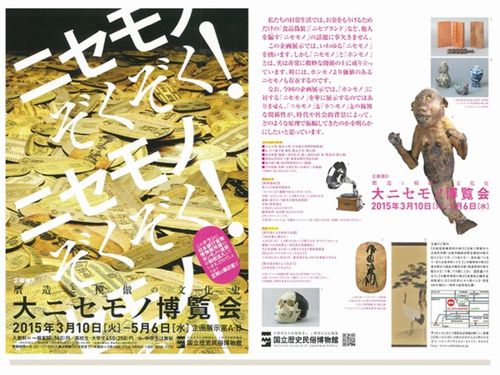
Poster for Rekihaku special exhibition, Great Fake Exposition: Cultural History of Forgery and Imitation.
Please share with us what you hope to accomplish as Rekihaku director-general.
Because of the COVID-19 pandemic, much of what we do now is conducted online. But people think through their physical interaction with other people and with physical objects, and that is how we refine our sensibilities. To that end, we must maintain our efforts to encourage people to actually visit the museum, though I understand the need to enable visitors to view our collection online.
We also need opportunities to reexamine how humankind has dealt with life and death, as well as disease, over the long span from the paleolithic period to today. Moving forward, we will be required to understand this pandemic from a macro-historical perspective. I hope that Rekihaku will someday host an exhibition on that theme.
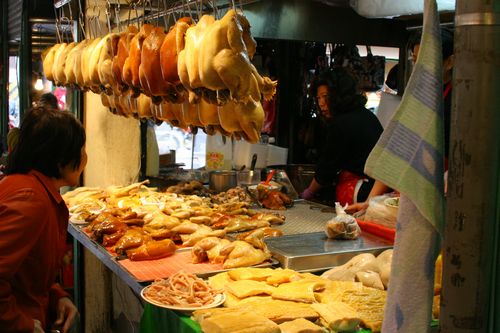
Professor Nishitani continues his research on the history and culture of regions through observing markets. Pictured here is a Taiwanese market, one of his research sites.
(Interview: Ayumi Koso)
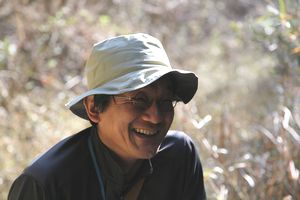
Masaru Nishitani, Director-General of the National Museum of Japanese History
Nishitani specializes in East Asian human history and archaeology. After graduating from Kumamoto University Faculty of Letters, Division of History, he completed his master’s coursework at Kumamoto University Graduate School of Letters, Division of History. After studying at Sun Yat-sen University Department of Anthropology in China, he became research assistant in 1989, associate professor in 2004, and professor in 2012 at the National Museum of Japanese History, Archaeology Division before assuming his current position in April 2020.
